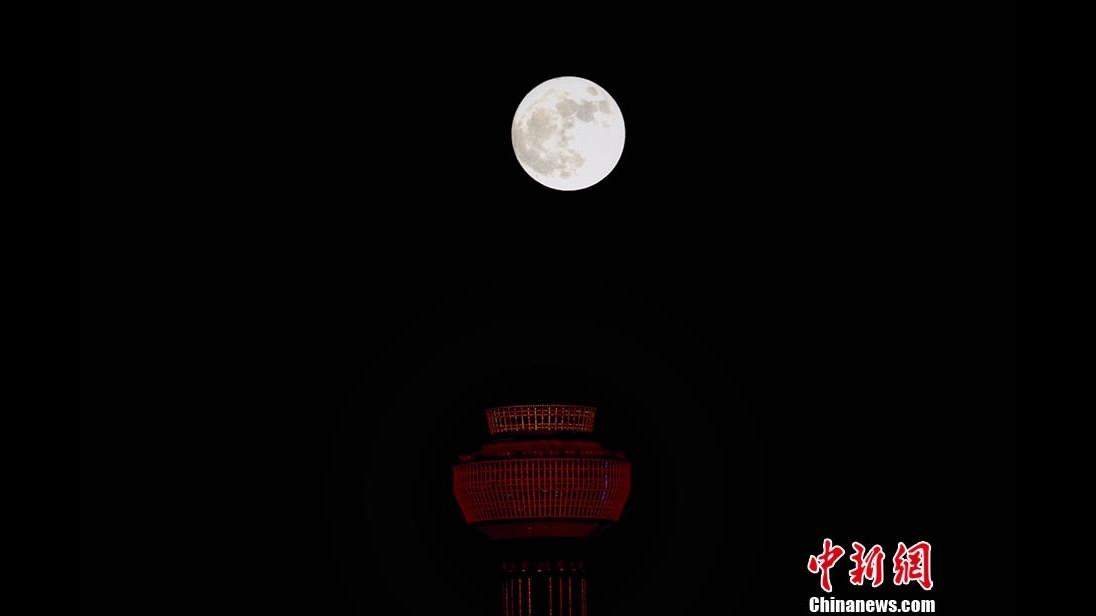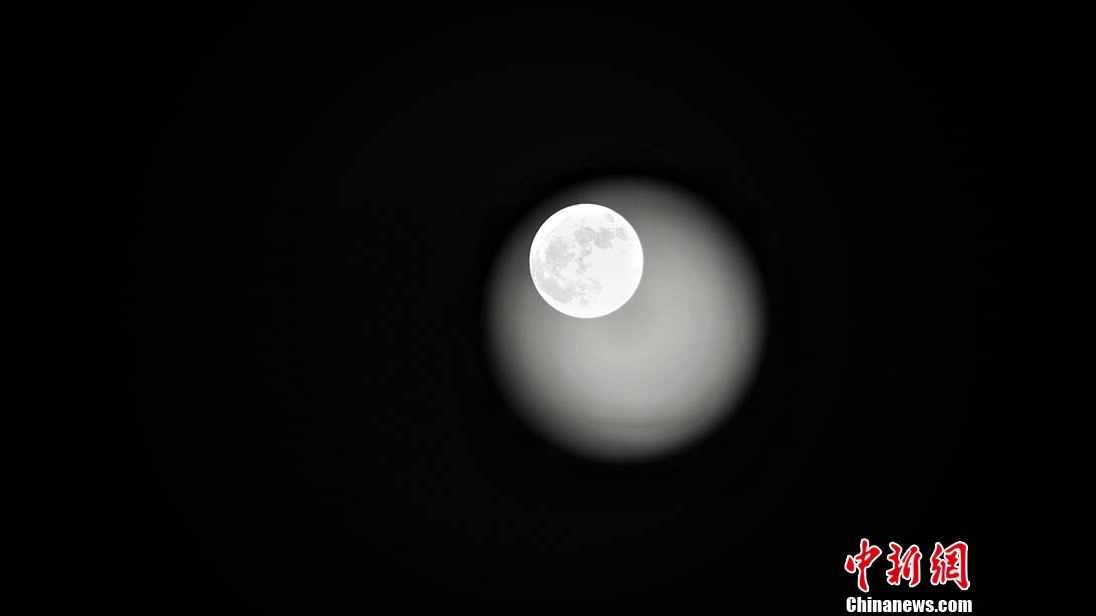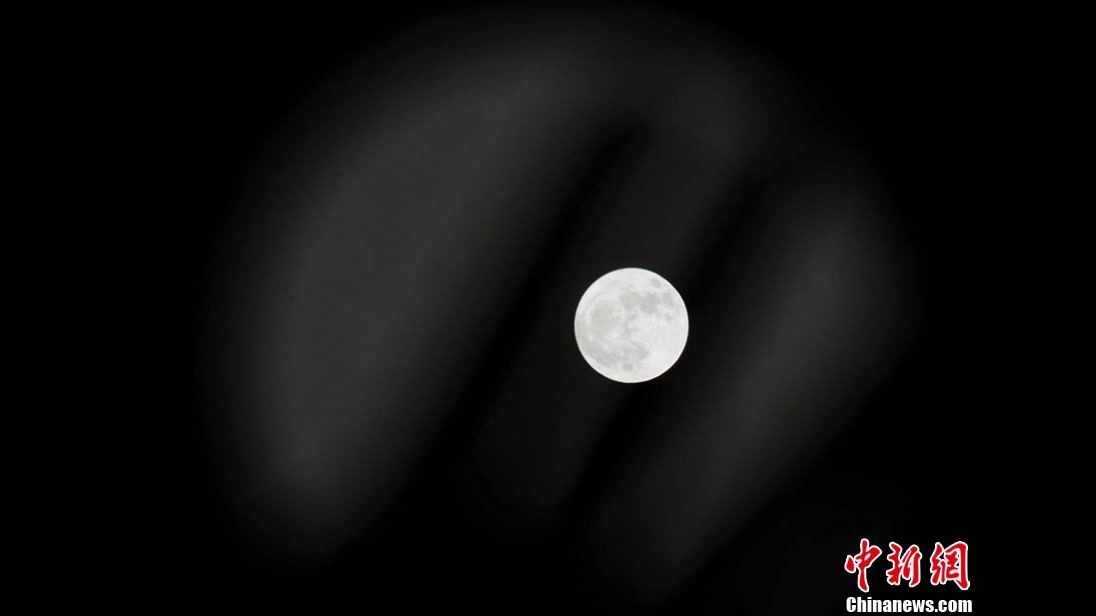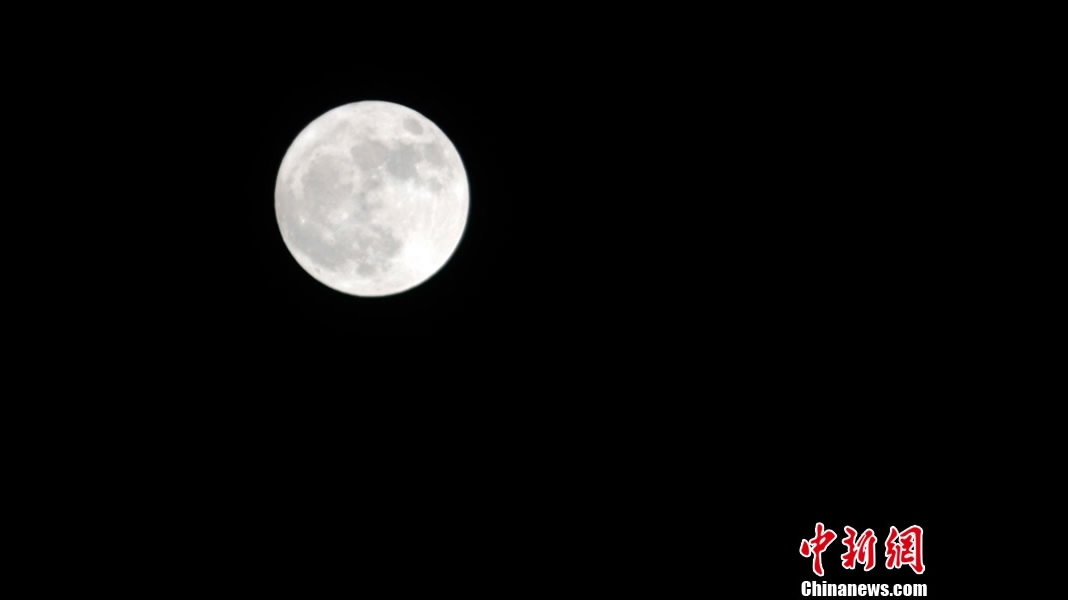

A spectacular full moon brightened up the night sky over Beijing on Sunday. Sunday’s first and last “supermoon” of 2017 was 16 percent brighter and, at its largest, up to 7 percent larger than usual, according to NASA. It was also the closest full moon of the year. /CNS Photo

The moon makes an elliptical orbit around the Earth once every 27 days, while a full moon happens once every 29.5 days. A supermoon happens when a full moon approximately coincides with the moon’s perigee, or a point in its orbit at which it is closest to the Earth. /CNS Photo

The last supermoon happened on November 14 last year, and was the largest since 1948. Astronomers say there will not be a bigger one until 2034. /CNS Photo

But a less “super” full moon can still be expected in the near future. According to NASA, the silver lunar orb will shine spectacularly again on January 1, 2018 and January 31, 2018. /CNS Photo

Copyright © 2018 CGTN. Beijing ICP prepared NO.16065310-3
Copyright © 2018 CGTN. Beijing ICP prepared NO.16065310-3